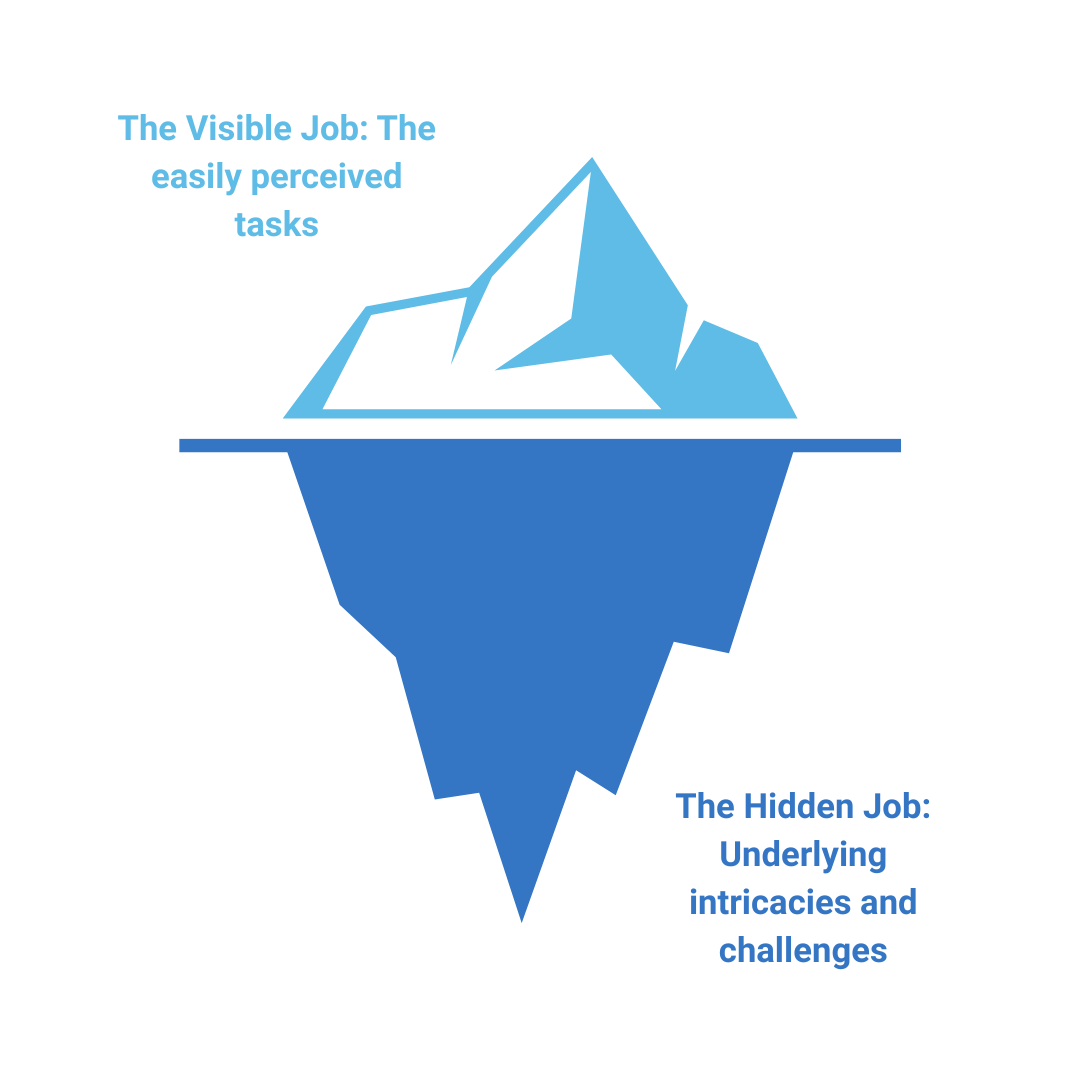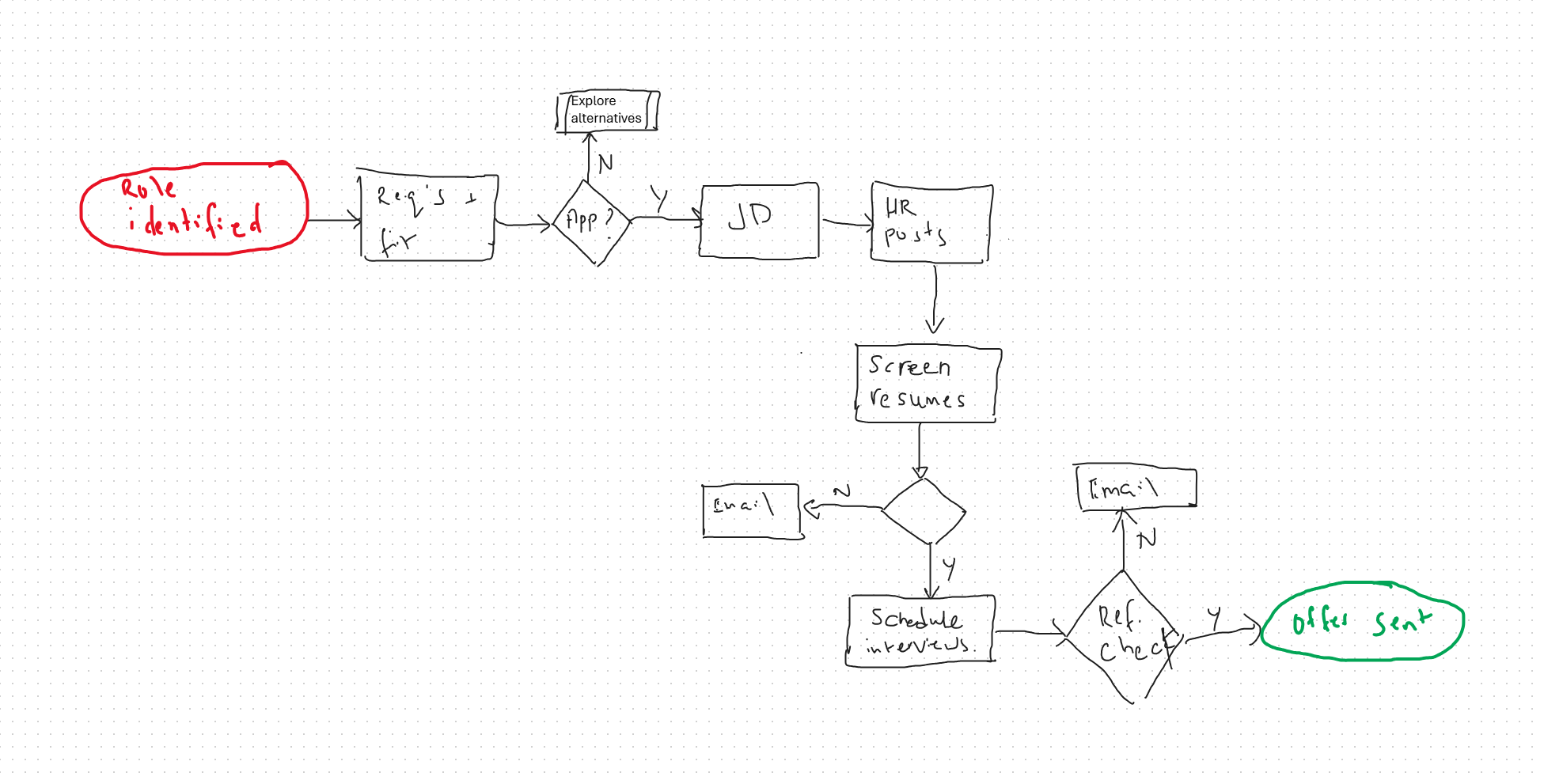That sound? That's the march of the AI Agents
I came across this 'org chart' on the Growth Unhinged Substack the other day: it's all the Marketing AI Agents for a small business:
Credit: Growth Unhinged
Similar Agent org charts are cropping up in other domains too: Engineering, Product Design, Sales, Finance, and more. You could make one of these for any role where the majority of time is spent in front of a computer moving data and information around.
I don't believe that AI agents replace all the people typically needed to do these functions, yet. But it's fascinating to observe how people are mapping out their ‘team of agents’ and their plan to manage them all.
Existentially, it also freaks me out and intrigues me at the same time.
What is an agent vs. automation?
I’ve been doing business process automation (BPA) for over 15 years—it’s much less sexy than saying I do AI agents!—, so I see this agentic vision as a building block from this foundation.
A question I explored recently is: what's the difference between automation and agents? They are similar, but different. The goal of both is to complete a task or a series of tasks.
Automation tends to be more 'rigid' and 'static' with if/then type workflows.
Agents have components of the automation, but they reason, adapt, and can have memory.
I like this model from the Futurepedia YouTube channel which describes three basic components for an AI agent:
Brain: Choose LLM(s) to handle the reasoning, planning, and language generation
Tools: How it interacts with the outside world, e.g. pulling info from documents, calendar, Teams, sending emails, etc.
Memory: Give the agent context, your data, the ability to remember past interactions, steps, etc.
The Lego pieces for building an AI Agent. Created with napkin.ai
If you’re Agent-curious, start simple
The question is: are the AI agents as effective as humans on the org chart? Some people argue they don't have to be equally as capable, as they are much cheaper than humans. So the tolerance for error is higher.
I do some marketing work, and probably use agents 10% of the time. I don't find them that helpful yet, and I also haven't invested in building them with code or advanced tools like Azure AI Foundry.
The agents I use are simple ones in Microsoft 365 Copilot for work. These help me create LinkedIn posts, and give me feedback on proposals, presentations, etc. The benefit is they are trained on my past writing, voice and tone, so they give me less AI-like feedback and suggestions. You can do the same thing in ChatGPT, Claude, etc.
Simple Agents in Microsoft 365 Copilot which are basically reusable prompts.
They are simple ones I built in 5 minutes into Microsoft 365 Copilot.
The simple agents I use in Copilot are more for coaching and feedback. They don't do the tedious work I hate, like taking a blog in a Word document, putting it into Squarespace, deciding on how to edit and format it, adding relevant images and links, and reviewing it for grammar and errors.
That would take me a long time to figure out in Copilot Studio or Foundry, so it's in the 'maybe someday' pile.
Yes, yes, I know...there are much better agent platforms out there like n8n.io and relay.app, but these are not approved for my Microsoft-based consulting work yet.
Should I be outsourcing more of my work processes to Agents? Maybe.
I work in a place that's drowning in work, even with AI. I've always worked in places where there is too much to do and not enough people to do it. Many work tasks are tedious, repetitive, and things I dread doing anyway, so why not outsource it? I don't want to spend any waking hours posting content to LinkedIn frankly.
Maybe I could spend more time in the woods if the agents are doing all the work. And most importantly, I don't have to sit and babysit every step.
The invisible work problem
But here's where it gets complicated: you can't automate what you can't articulate.
When I think about "posting to LinkedIn," it sounds simple enough for an agent. But when I actually map out that process, I realize how much invisible work is involved. I'm checking for typos, yes, but I'm also considering timing, adapting tone for different audiences, remembering recent company announcements that might affect messaging, deciding if the post needs a custom image, and getting a gut feeling when something sounds "off" and needs a different approach.
What looks like a simple task is actually an iceberg. The visible part is small, but there's tons of hidden complexity underneath.
Visible vs. Invisible Work
Before you can build agents, you have to become a business analyst of your own job. That's work in itself: mapping processes, documenting decision trees, capturing all those little "Oh, and also..." steps that you do automatically. It's like having to reverse-engineer your own expertise.
This documentation tax is real. Most of our work is invisible, intuitive, contextual. We make micro-decisions based on years of experience, and we don't even realize we're doing it.
How to decide what agents to build
So if we're going to live in this world of agents, how do we be strategic about it rather than just automating everything because we can?
Here's how I'm starting to think about it:
The "Dread vs. Delight" test: I dread posting to LinkedIn but find value in the writing and editing process for a longer piece of writing. That's a clear signal of what to automate vs. keep.
The "Learning" filter: Tasks that teach me something or help me stay connected to my work and audience are worth keeping. Tasks that are pure execution of something I already know how to do well are good candidates for agents.
The "Competitive Advantage" lens: What tasks, when done by me personally, create unique value that competitors can't easily replicate? Keep those. Generic tasks that anyone could do are good automation candidates.
The "Relationship Building" factor: Does this task help me build relationships with clients, colleagues, or my audience? The human touch might matter more than efficiency.
The "Failure Cost" assessment: What happens if the agent screws up? Low stakes are good for automation. High stakes likely need some human oversight.
Maybe the real question isn't "What should I automate?" but "What am I actually doing that's worth preserving?" The process mapping exercise might reveal that some of my tedious tasks actually contain more strategic thinking than I realized.
And honestly, that validates the resistance many of us feel. It's not just fear of change. It's the very real work of having to understand and document our own expertise before we can hand it off to machines.
Start small, not with the whole org chart
The org chart vision is fascinating as a design exercise, but trying to build it all at once is overwhelming. I know because I'm struggling with this too. I've tried Copilot Studio and it doesn't do what I want. Do I need to learn to code? There are so many options that choosing feels paralyzing.
And so I go back to do things manually, or delegating to others.
But let me take that LinkedIn posting example and break it down into smaller pieces. Instead of one "LinkedIn Agent," it's actually a series of agents handling different tasks:
Research Agent: Scan industry news, competitor content, trending topics in my field
Content Calendar Agent: Plot out the content calendar with blog posts, company news, product launches - so I know what's coming and can plan around it
Draft Agent: Write posts with the correct links, proper formatting, appropriate tone for different content types
Visual Agent: Create engaging thumbnails and graphics that match brand guidelines
Publishing Agent: Actually post at optimal times, track engagement, respond to initial comments
When I map it out this way, I realize I could probably start with just the research agent. That's the most tedious part for me: staying on top of industry news and trends. If an agent could deliver me a weekly digest of relevant topics with links, that would already save me hours.
And that is the starting point for new apps and services like Relay. Here's my really simple LinkedIn Research Agent I built in a few minutes by following the guided tutorial:
My first LinkedIn Research Agent built with Relay
I want it to do more by bringing together more data sources, but that will have to wait for another day. In Relay, there are many choices for AI models to use, actions, and triggers. You have to spend time learning it like any other tool. But it's a good option for no-code and low-code agents.
Knowing how to build these, and most importantly when, are super useful skills for all knowledge workers.
The journey so far
I'm telling you to start small and experiment, and I'm figuring this out as I go too. The tools don't always do what I want them to. The options are overwhelming. Maybe the real first step isn't building the perfect agent. It's just mapping one annoying process really well and seeing what happens.
One area that you will have to accept is the tech debt. AI models are changing so fast, and the pricing is changing all the time. Updates to the process could be almost another job. Maybe that's how we stay employed: we constantly update all the agents, at least until we build the agent that updates all the other agents!
The march of the AI agents is coming whether we're ready or not. But maybe being intentional about which battles we choose to fight and which ones we're happy to let the agents handle is how we find our way to those woods after all.



